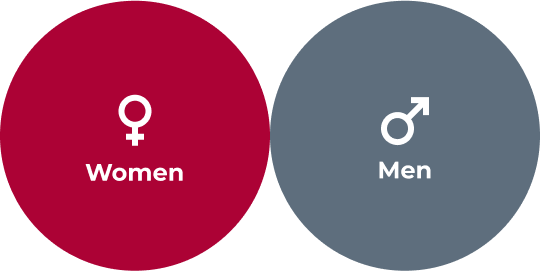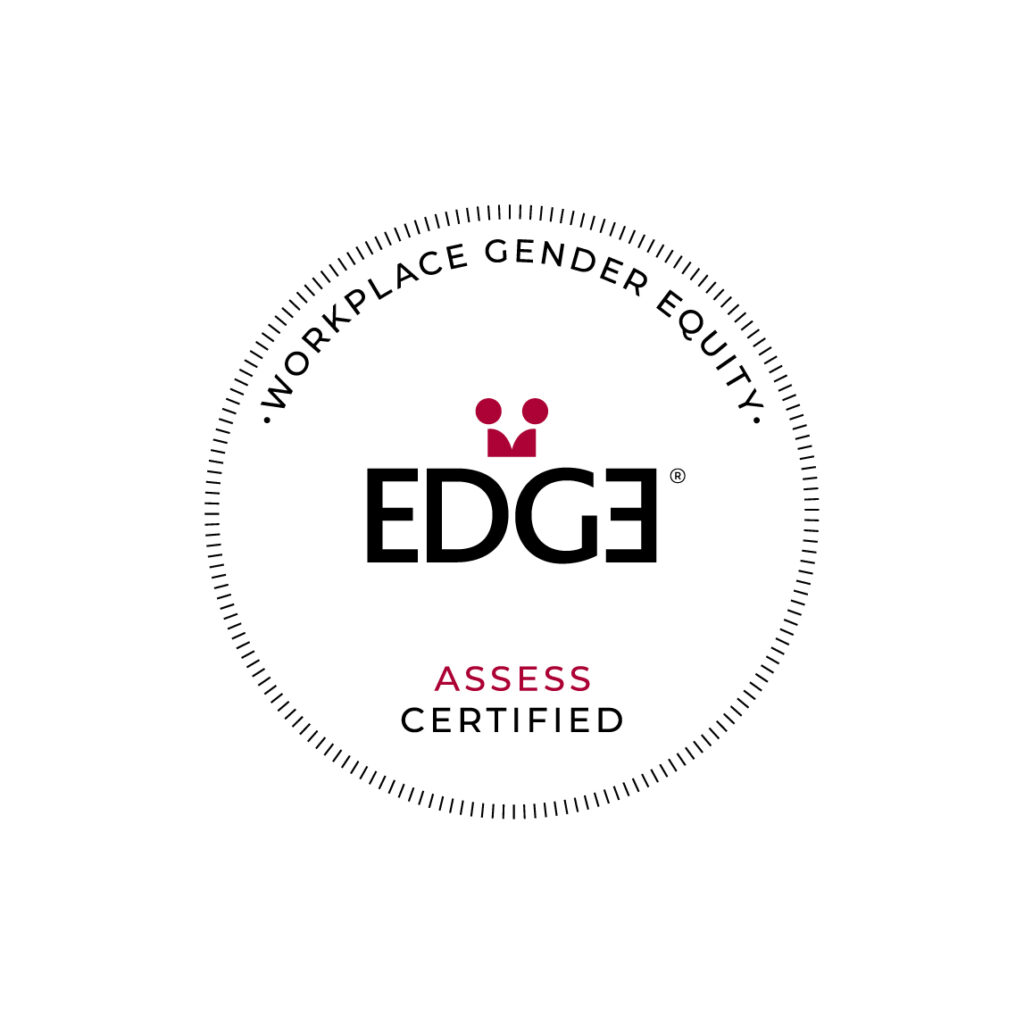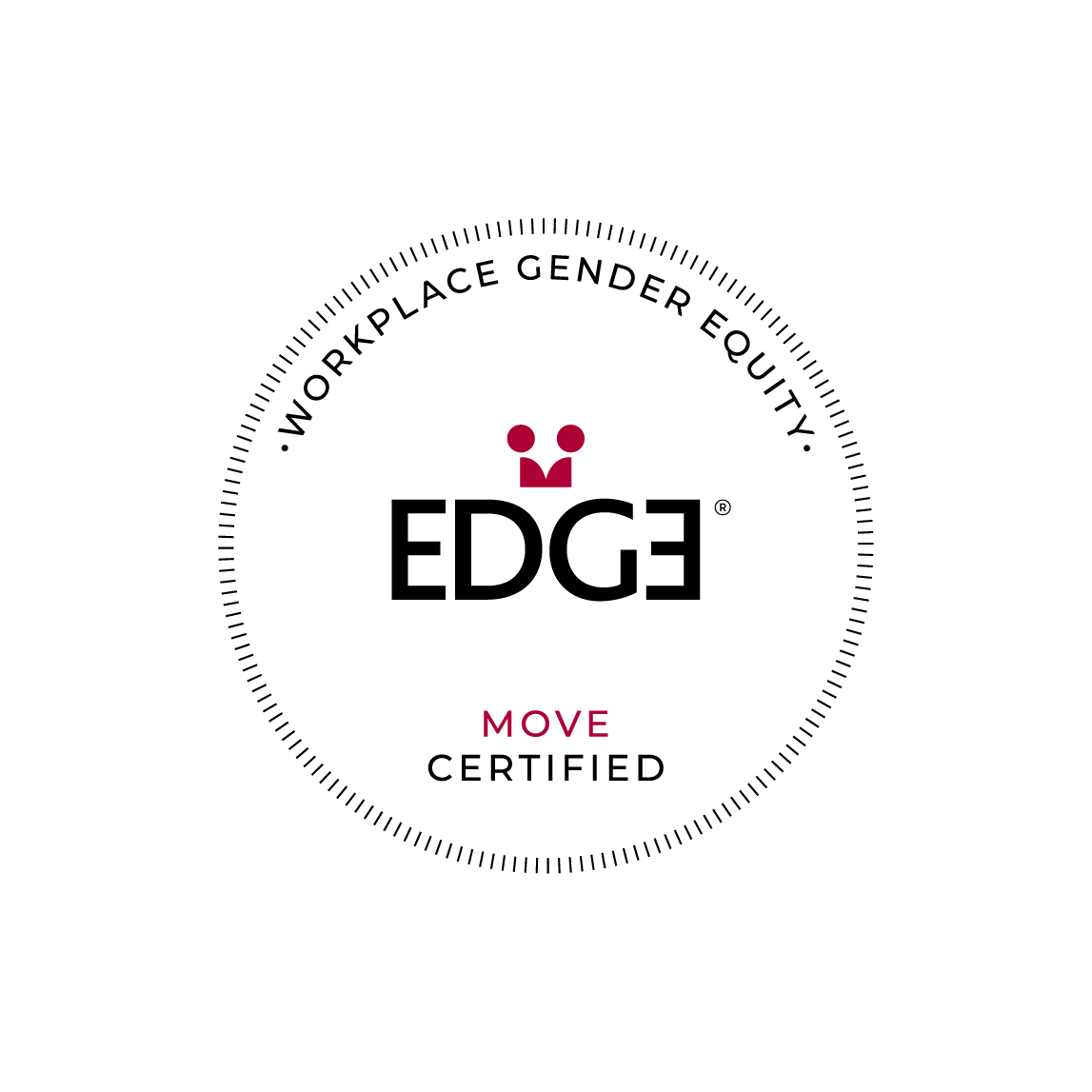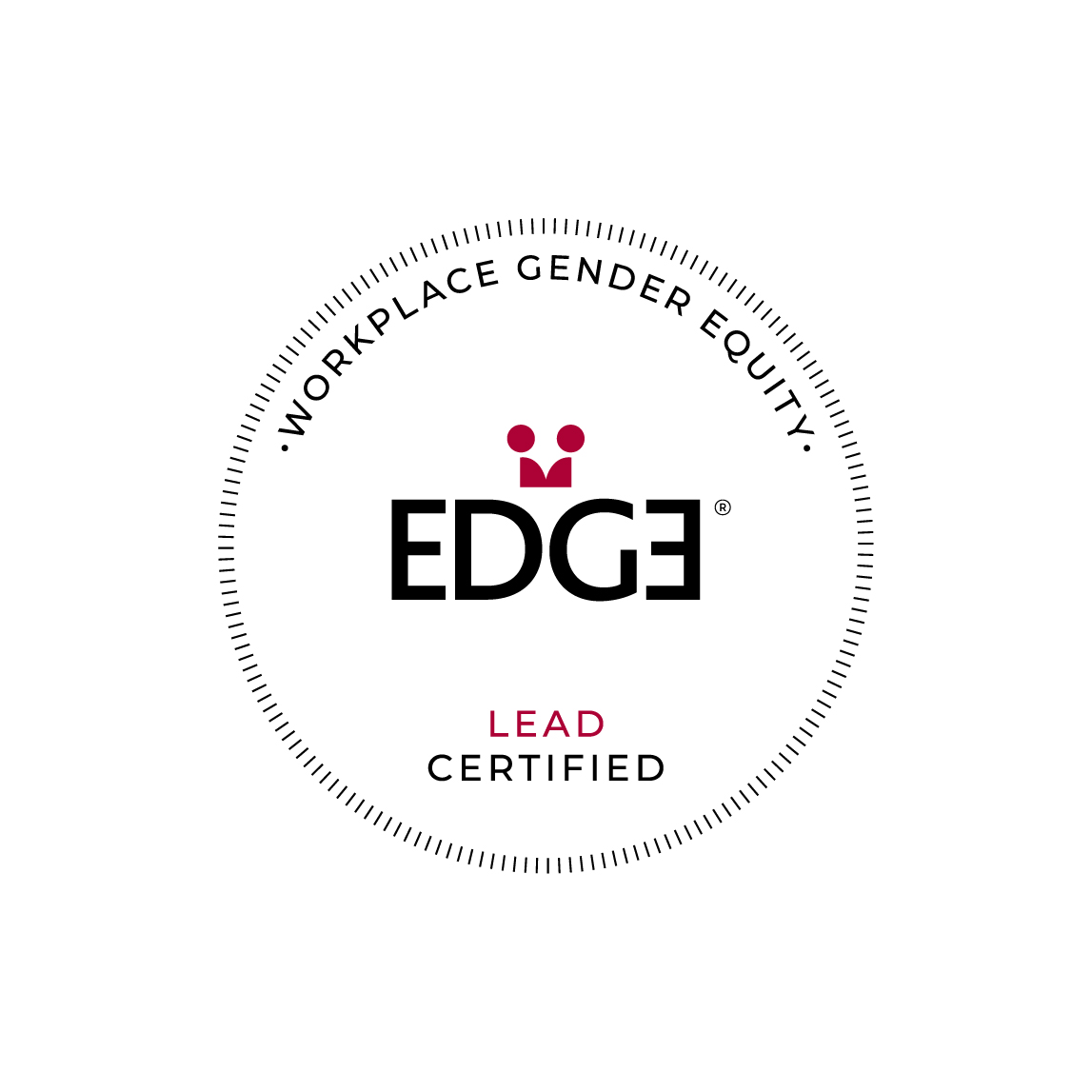Our Global Standards
Edge
EDGE (gender-binary) looks at men and women as two homogeneous groups. It offers organizations the possibility to analyse data and information related to women and men.
Organizations that achieve EDGE (gender-binary) Certification are awarded an EDGE Certified Seal. This seal gives visible recognition that the organization chooses to hold itself to the highest standards in workplace gender equity at one of the EDGE Certification levels: Assess, Move or Lead.

EDGEplus
EDGEplus (gender and intersectionality) is an add-on to the original EDGE Standard, now referenced as EDGE (gender-binary), and enables certifying organizations to deepen their understanding of gender-related matters by measuring and analysing the intersectionality of gender and other aspects of diversity.
EDGEplus offers organizations the possibility to analyse data and information related to women and men as diversified groups.
An organization is publicly demonstrating their commitment to analysing gender in intersection with other dimensions of diversity – this is why we have the + symbol in the EDGEplus Seal.
EDGEplus allows organizations to create a highly personalized evaluation specific to their priorities. The methodology has been designed to put organizations on an accelerated path to progress by focusing only on what is relevant and necessary to assess their current situation.
Given that the field of intersectionality and gender equity is complex and evolving, this methodology does not yet specify scoring thresholds.
What the EDGE Standards Measure
The EDGE (gender-binary) and EDGEplus (gender and intersectionality) Standards, Assessment Methodology and Certification System are built on four pillars that define success in gender and intersectional equity:
Representation
Pay equity
Effectiveness of policies and practices to ensure equitable career flows
Inclusiveness of the culture
*Click or hover over each box for further information

Representation
This diversity-related pillar measures representation across different types of jobs and different levels of responsibility.

Pay Equity
Pay equity ensures that individuals performing substantially equal
work within the same organization receive equal remuneration,
regardless of their gender, race/ethnicity, nationality.
Effectiveness
Effectiveness of policies and practices is an equity related pillar. A thorough assessment of an organization’s policies and practices is important to analyse if it is effective in promoting equitable career flows.
Inclusiveness
The inclusivity pillar is about understanding how inclusive the culture of the organization is, as reflected in employees’ experiences in terms of their career development opportunities within the organization.
Triangulating Processes and Outcomes for a Holistic Gender and Intersectional Equity Assessment
Passing the EDGE (gender-binary) Standard requires quantitative data and qualitative information from three different sources about an organization’s approach to, and implementation and employees’ rating of, gender equity in the workplace for a given 12-month reference period. Organizations seeking EDGEplus Certification choose to input data into one, two, or all three sources of information.
Organizational Statistics
Data Tables
Infrastructure
Policies and Practices Questionnaire
Experience
Employee Survey
Third-Party Certification System
To maintain impartiality, EDGE Certification operates as a third-party certification system. Certification Bodies are accredited, EDGE-approved third-party organizations that conduct audits and certification according to EDGE Standards. They verify that an organization meets the EDGE Standards and issue certification documents to confirm compliance.

FLOCERT is a leading global certification body, providing sole certification to Fairtrade and offering verification services for social and environmental standards as well as private codes of conduct.

Intertek is an industry leader with more than 44,000 employees in 1,000 locations in over 100 countries, delivering Total Quality Assurance expertise with industry-winning processes and customer-centric culture.

SGS is one of the world’s leading inspection, verification, testing, and certification companies. With 99,600 employees, SGS operates a global network of 2,600 offices and laboratories around the world.
EDGE Certified Seal
Organizations that achieve EDGE (gender-binary) Certification and EDGEplus Certification are awarded an EDGE Certified Seal. This seal gives visible recognition that the organization chooses to hold itself to the highest standards in workplace gender and intersectional equity at one of the EDGE Certification levels: Assess, Move or Lead. Organizations certified with EDGEplus receive the EDGE Seal at their achieved EDGE (gender-binary) level, with a plus symbol added.

EDGE Assess
EDGE Assess is the first level of certification. It’s all about recognizing an organization’s commitment to workplace gender equity.

EDGE Move
EDGE Move is the second level of certification and showcases progress in workplace gender equity. At the EDGE Move level, the organization has reached the EDGE Standards in some of the assessed areas.

EDGE Lead
EDGE Lead is the highest EDGE Certification level, showing that the organization meets every single one of the EDGE Standards across the four pillars of the methodology.

EDGEplus
EDGEplus Certification showcases the organization’s commitment to analysing gender in
intersection with other dimensions of diversity. EDGEplus Certification is a visible and credible recognition of an organization’s commitment to intersectionality, alongside their achieved EDGE level of Certification.
